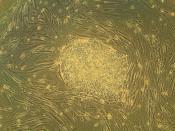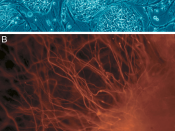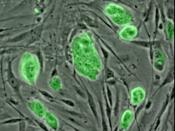Introduction
Politicians, philosophers, lawyers and scientists have been arguing about it for years, but most recent headlines have reignited the simmering debate about therapeutic cloning. Having sent ripples through the scientific and political communities, this issue presents at once radical advantages to medical evolution, and highly controversial moral issues. It seems that the new prospect - using cloned human embryos for medical therapy - will take some time before breaking political and moral barriers to become an accessible reality.
What are stem cells? Uses?
The exclusive particularity of stem cells, is the aspect attracting scientists to put them to many uses for sufferers. Stem cells are cells from which all other tissue types spring. They are present in an embryo only days after conception, and their nature predisposes them as capable of developing into cell types that basically make up the body. Stem cells could then be grown into custom-made and perfectly adjusted organ tissue transplants, offering scientists the best hope for curing diabetes, Alzheimer's, cancer and spinal cord injuries.
How is it done?
The process involved to reach this point is rather complex, and its final step involves the destruction of the egg. Human ovums are obtained by donation or abortion; DNA is inserted from other cells; the eggs are grown into embryos; and finally, the stem cells are extracted from the embryo, destroying it in the process. The stem cells would then be spurred to become specialised cells, and transplanted into the donor to replace faulty tissue.
Actuality in the news
But what is in the news that has made stem cells such a focal point in the last couple of days? Why are we revisiting the issue?
South Korean scientists, led by veterinary professor Hwang Woo-suk, have created 30 human embryos through cloning, and have succeeded in...



Stem Cells
I thought it was an informative, precise and accurate essay. UR essay would have been a lot better if u had incorparated the question into it but apart from that it is a fine essay
1 out of 1 people found this comment useful.